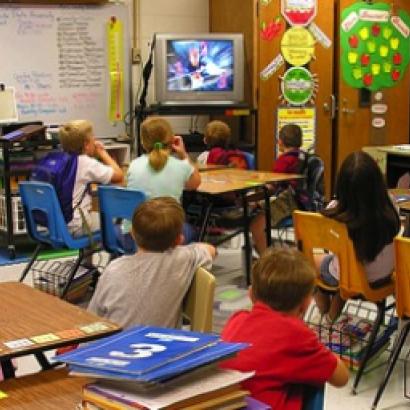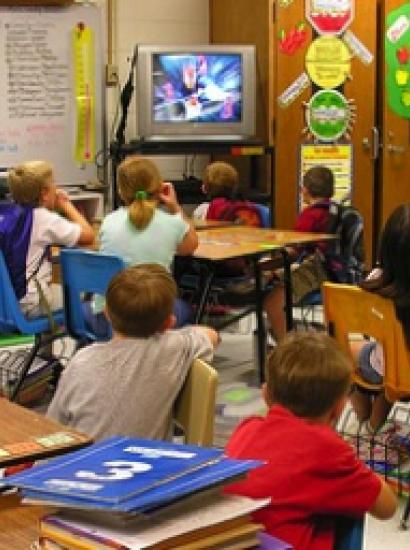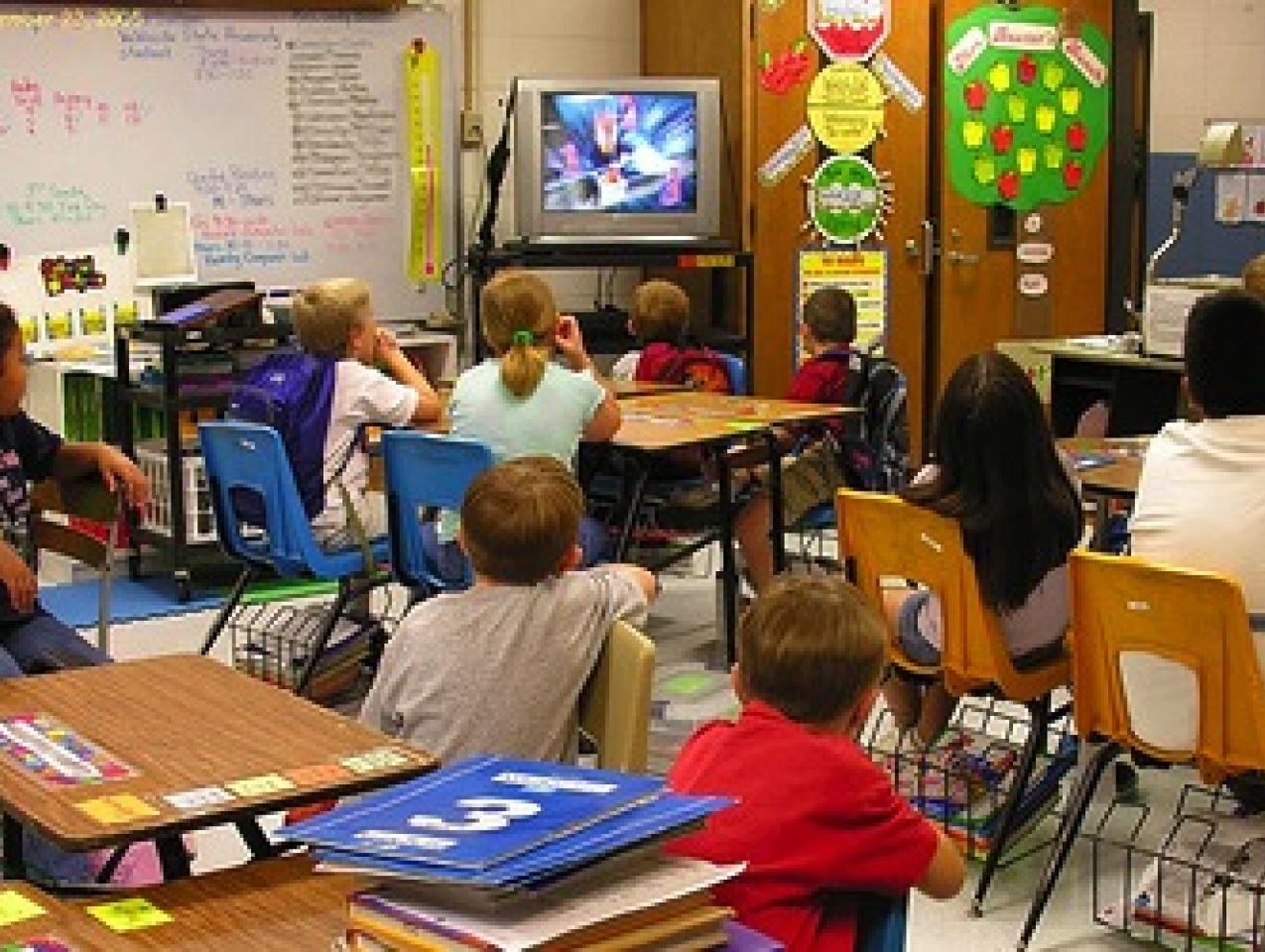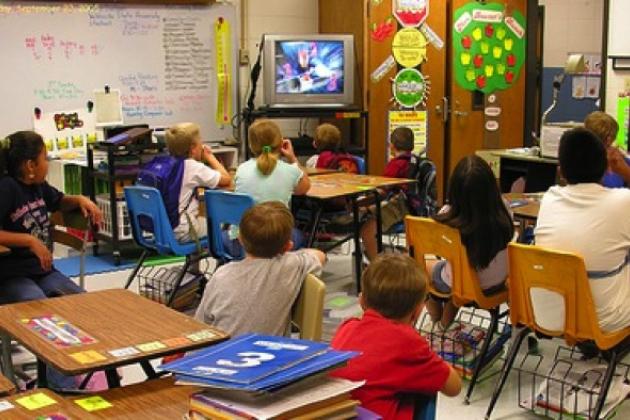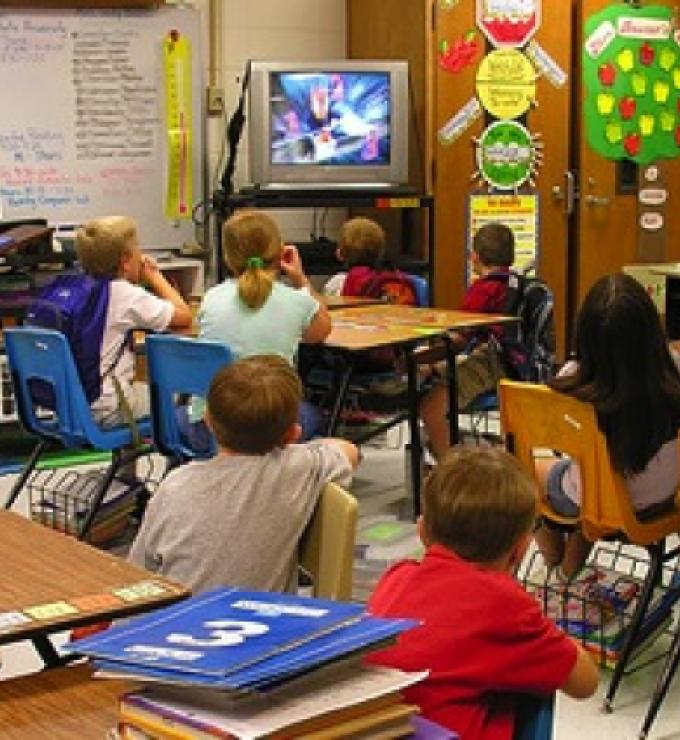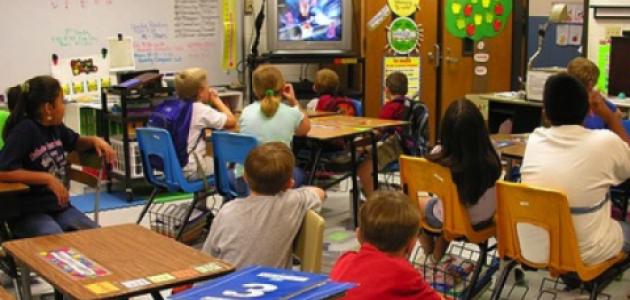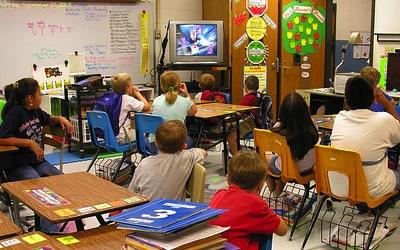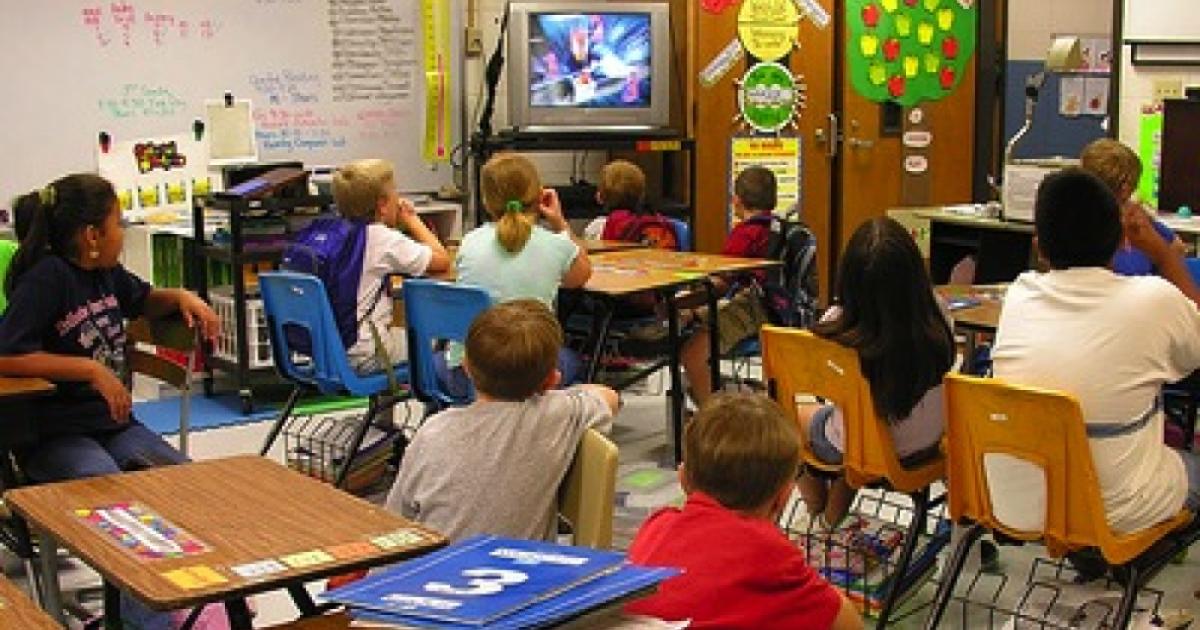- Education
Editor’s note: In this essay, the author blends prediction with prescription to paint a vivid picture of what American education will look like in 2030. The essay is from an online publication of the Hoover Institution’s Koret Task Force on K-12 Education, American Education in 2030.
Rasheed should never have graduated from the University of Pennsylvania. Or so the statistics said when he was born in 2009. Rasheed’s mother had dropped out of West Philadelphia High—mere blocks from the prestigious university—like well over half of her classmates. She gave birth to Rasheed when she was barely 18 years old and single. Though she later completed a GED, her education left her unprepared for all but low-skill, low-paying jobs. Rasheed was raised in the same dilapidated neighborhood as his mother. In west Philly, this was the norm. Almost no one raised there—three percent to be exact—finished college.
But finish he did, at age 21, in four years. And Rasheed was not alone. Nearly a quarter of the kids he grew up with—like him, mostly poor and African American—earned college degrees in 2030. What seemed improbable when they entered the world was now at least attainable. High school graduation had also become commonplace; all but a tenth of the kids from his neighborhood earned regular diplomas.
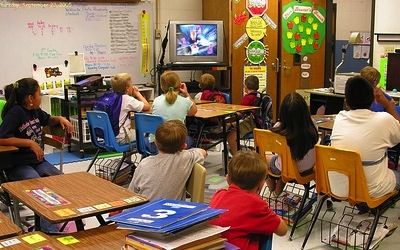
Photo credit: Old Shoe Woman
What made this progress possible? West Philly remained a disadvantaged community. Parents were no better educated to help their children learn. Public education had not benefited from a windfall of tax dollars. High school standards had not been dropped to make graduation easier. The University of Pennsylvania, like many American universities, remained the envy of the world and tough to get into. So, what happened?
Public education improved. Finally.
Shaking Up the System
Rasheed attended the same schools as his mother, beginning with Samuel B. Huey, a once esteemed K-8 school that educated some of city’s leading citizens as recently as the 1950s. By the 1990s, however, the school, like the neighborhood, had been declining for decades. Two-thirds of Huey’s students regularly failed state reading and math assessments. And, when they attended West Philadelphia High School, most, like Rasheed’s mother, dropped out.
The School District of Philadelphia tried to halt the slide. In the 1990s, the district was led by one of the nation’s leading reformers of the time, David Hornbeck. Class sizes were reduced, a standard curriculum introduced, and professional development reinforced. The schools benefited from a steady flow of supplementary funding from the state. But whatever progress resulted was too little, too late. Over half of the city’s students still failed the state’s assessments annually. In 2001 the state seized control of the district.
Though it would not become apparent until years later—about the time Rasheed began school—this was a turning point for public education in Philadelphia. The School Reform Commission, created by the state to oversee the schools, acted boldly to improve them. (Its most outspoken advocate for change, James Gallagher, had graduated from the Huey School, and gone on to the presidency of Philadelphia University.) Two actions were paramount. The Commission hired Paul Vallas, a tough CEO—not a superintendent—from Chicago to get results. And, it invited outside firms, reform organizations, and universities to run the 45 lowest achieving schools in the district. The combination epitomized the nation’s most promising reforms: hold schools accountable for student achievement and introduce competition to spur innovation and improvement.
The takeover worked. Achievement throughout the district turned around. In some schools it improved dramatically. Huey was one of those. Supported by a private manager, its failure rate on state assessments dropped from 80 percent to 20 percent. Over half of its students scored proficient, satisfying grade level standards. The gains were largely made the old fashioned way: clear standards, high expectations, demanding curriculum, and a principal willing and able to attract, motivate, train, retain, and hold responsible a team of dedicated teachers. But the progress laid the foundation for more fundamental change already underway.
New Ways to Learn
As a kindergartner, Rasheed began school with the academic disadvantages of so many children in his neighborhood. His home had few books and he had little experience with them. His family was not well schooled, and communicated with a limited vocabulary and imperfect grammar. He would struggle to learn how to read.
Computer programs can provide meaningful and tailored instruction to students.
But Rasheed had something his mother did not have as a child. His family owned a computer. By 2010, the cost of computers had fallen to levels even the disadvantaged could afford, and half of all low-income homes had one. Rasheed loved video games and had been playing with interactive toys from the time he was a toddler. The computer was the next step up, and he took naturally to the activities for kids available on it.
Rasheed also had something different at school—or really, lots of things. Huey was changing steadily, as were city schools throughout the nation. Huey was improving because, well, it had to. When the state introduced private providers into the Philadelphia school system, it was doing what other states had been doing since the early 1990s: providing competition for traditional schools and choices for families often stuck in schools that were failing.
Charter schools, public schools run independent of local school boards, were authorized by forty states and the District of Columbia. By 2009, 4500 charter schools serving nearly 1.5 million children nationally had taken root, mostly in inner cities. Philadelphia was home to fifty charter schools, along side 250 traditional public schools. While Paul Vallas had departed Philadelphia to oversee the highest concentration of charter schools anywhere, in New Orleans, Philadelphia continued to embrace charters and the energy they brought to the system. Huey could either provide an attractive choice to parents, or lose students and close down.
Huey chose to innovate, beginning with technology. Educational software, long relegated to supplementary roles in public schools, had begun to improve sharply. It was a matter of supply and demand. Nationally, as schools were given incentive and freedom to innovate, more of them began to adopt software with the potential to provide core instruction. Internationally, rapidly developing countries such as India and China, turned to technology to meet education needs that traditional methods could never hope to satisfy. With low development costs and lots of engineers (trained in the United States), overseas technology firms were introducing new and improved instructional technology at a pace literally foreign to American schools.
By the time Rasheed entered Huey, a quarter of every student’s day was being spent learning directly through technology. For primary children, beginning with kindergarten, the norm was an hour a day of one-on-one time with computers. By the middle years, grades 6-8, two or more hours were standard. The more children were able to learn independent of direct instruction by a teacher, the more they did so. Independence facilitated differentiation. The biggest challenge to traditional whole class instruction is meeting the needs of students with differing strengths and weaknesses. In the inner city, the differences are often vast, from the few students who exceed their grade level to the many who struggle sometimes years behind. Even the very best teacher cannot meet all of these needs instructing a whole class.
Computerized instruction allows each student to be taught exactly what he or she needs, in a fashion that each best comprehends. Computers can present lessons to be read, heard, visualized, and interacted with. Students proceed at whatever pace is necessary to master a skill or concept.
Rasheed loved the phonics programs that first helped him decode words and later promoted his fluency. He could practice speaking sounds and words into a microphone and, hearing a voice through his headphones, fine-tune his pronunciation. The extra practice enabled Rasheed to read on level by the end of third grade. Research has consistently shown that achieving this milestone is one of the best predictors of high school graduation. Once students can read fluently, they have a chance to master history, science, mathematics, literature and all the rest—which inevitably must be read.
Some of Rasheed’s classmates did not catch up as easily as he did. They had issues that required more refined interventions. Technology helped them, too. Some required “cognitive training” to be able to make the nuanced distinctions between letters and sounds that the English language requires. Computerized exercises, disguised as games, developed their capacity to make these distinctions automatically. Other classmates were reading above Rasheed’s level. Technology customized their instruction as well. They read increasingly complex text and wrote essays online; teachers online sent them comments almost immediately. The escalating challenges, frequent feedback, and daily practice allowed them to accelerate as individuals.
A New Kind of School
Technology not only changed instruction at Huey; it changed the entire school. Children of Rasheed’s generation, rich or poor, urban, suburban, or rural, embrace technology naturally and intuitively. From video games, to home computers, to cell phones, to MP3 players, to handheld devices that integrate all of these, technology is all that these young people know for information, communication and, of course, entertainment. Technology engages them in ways that conventional media—books, newspapers, and classroom instruction—simply do not. Schools once worried how they would “maintain control” if students didn’t spend every minute of the school day in classes supervised by teachers. In fact, maintaining control in that fashion was the challenge—kids resisted it.
Children of this generation embrace technology naturally and intuitively.
Huey knocked down classroom walls and built large multi-media rooms where several classes of students could work individually or in small groups on computers—or use traditional resources. Students loved learning through technology, and at their own pace. It was inherently engaging and well matched to their needs. Students still spent the majority of their time under the care and direction of teachers. In the primary and elementary grades, teachers provided core instruction and established the vital bonds with children that nurture their motivation. Technology provided the differentiation.
By the middle grades, teachers and technology shared core instruction. All students took Algebra I at Huey by the eighth grade, while some began it in seventh or even sixth. All students took Algebra I online. Online instruction had come a long way from the early days of lectures, PowerPoints, and textbooks delivered electronically. By 2020, online courses were rich, interactive multi-media experiences. The best teachers in the world presented lessons. Animation and video helped explicate concepts that textbooks and lectures could never do as well. Students could work “asynchronously,” using only technology, or “synchronously,” receiving direct help from teachers online. The mix of synchronous and asynchronous was determined student by student, optimizing the mix of teachers and technology that helps each student achieve.
Algebra I was where Huey began with core online instruction. As that succeeded, the school added the entire middle-years science curriculum. Simulation technology had enabled online experiments to give students a first-rate hands-on experience, a necessity in quality science instruction. And quality science teachers were hard to find in the inner city. Huey, like most urban schools in America, struggled to find and keep superior teachers, particularly in math and science.
Technology and online education helped the school enormously. First, it brought directly to students content and instruction, not only of high quality, but the same quality as students received online in the suburbs or other more affluent areas. Second, technology reduced the number of teachers that Huey required: when students worked in large group settings with technology or took classes online, fewer teachers were needed for supervision or instruction. With fewer positions to staff, Huey could be even more selective in hiring and retention, and thereby raise the quality of its teachers and their instruction.
Rasheed and his classmates benefited from the wholesale changes at Huey. Nothing is more important in traditional instruction than the quality of the teacher—and Huey’s teachers were now much better. A close second is a challenging curriculum, and Huey was able to keep the content demanding by raising teacher quality and putting the toughest material online. Finally, Huey met the individual needs of each student, from learning how to read to mastering the academic subjects, via technology. As students left Huey for West Philadelphia High, most were on grade level.
A New Future
For inner city kids, high school was once a source of frustration and failure, an institution which they entered unprepared and left without finishing. For suburban kids, high school was like a shopping mall—to borrow a famous analogy—a place to hang out and get as much or as little you pleased, biding time until college. For very few kids did high school provide an effective transition from the basics of middle school to the sophisticated knowledge and skills necessary in college or in a productive career.
By 2030, high school will be the most changed institution in public education.
By 2030, high school was the most changed institution in public education. Some of this was planned. Efforts that were first encouraged by the administration of George W. Bush and then funded by the administration of Barack Obama yielded new national academic standards for high school—and in time lower grades as well. Schools were directed to help students achieve demanding objectives across a range of traditional and new fields—including technology—that were proven valuable to success in college and careers. High schools were given a clearer purpose for educating all students, for a productive future, and then held to account.
But there the planning stopped. High school was reshaped by the forces of technology and competition. Students become better able to learn independently as they mature. By high school, students have the capacity to master whole subjects through media other than a teacher. Technologists and entrepreneurs recognize this and have invested heavily in online instruction for high school students.
In the beginning, high schools turned to online instruction for courses that they could not easily or successfully offer the old fashioned way: Advanced Placement classes, subjects with low student demand, summer school courses for students who failed the regular course, drop-outs who needed an alternative to the classroom. Students liked the technology, appreciated the opportunity to move at their own pace, and enjoyed the newfound flexibility of learning at times that suited their schedules—for online can be done at home as well as at school.
But what drove online instruction into the mainstream was competition. Nowhere was this more evident than at West Philly High. Pennsylvania was not only an early adopter of traditional charter schools. It also was the leading state in the development of charter schools online. By the time Rasheed was born in 2009, Pennsylvania had 11 online charter schools, serving all grades, and 10,000 high school students enrolled in them. The city of Philadelphia lost 4,000 high school students to cyber charters annually—a loss of nearly $50 million in revenue.
All kinds of kids were flocking to online high schools: kids with jobs, kids who had been bullied, kids who were bored by the slow pace of traditional schools, kids with special needs, all types. The exodus to online schools only accelerated in the ensuing years, in Pennsylvania and elsewhere, as the schools gained acceptance and the technology and online teaching advanced.
Traditional public schools had to fight back, or go under—and they did. Most kids still liked having a high school to attend, to socialize, to play sports, perform in plays, and even learn with one another. Online social networks in cyber schools are great, but so is face to face interaction. Traditional high schools steadily evolved into hybrid institutions. Kids took some classes led by teachers but, more often, their core instruction was online. Their work with teachers occurred for individual tutoring, group projects, and seminars. Teachers also worked online, during school hours and evenings, honing new skills and meeting student needs in new ways. Schools required fewer teachers and their quality consequently rose. University faculty also taught high school online—for college credit. High school became more engaging, individualized, and, most of all, more effective.
The Nation
Rasheed was a prime beneficiary of the forces that reshaped the schools of Philadelphia—accountability, competition, and technological change. His schools were driven to improve. Technology made substantial improvement all the more possible. He learned to read fluently, when he otherwise would not have. He was taught more successfully, with technology meeting his needs in ways regular classrooms could not. His teachers were of increasing caliber. He not only graduated from high school; he achieved at a level that gained him college admission to a highly selective institution.
Rasheed, of course, is but a hoped-for child of the future. The schools of Philadelphia, however, are quite real. The pressures and challenges that they face are the same as those faced by schools across America—suburban and rural, as well as urban. The problems are greatest in the cities. But the issues of under-achievement are nationwide.
As are the forces for progress. Schools everywhere are being held accountable for student achievement and, almost everywhere, schools face competition to change. Technology will accelerate the influence of these forces by enabling students to be taught and schools to be organized in fundamentally different and more effective ways. Technology is also blind to race, income and location. By 2030 public education should finally help all students achieve much more.








